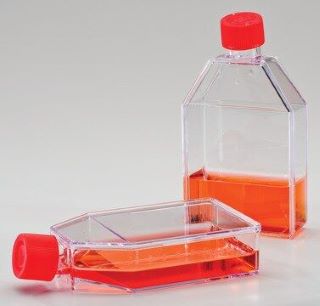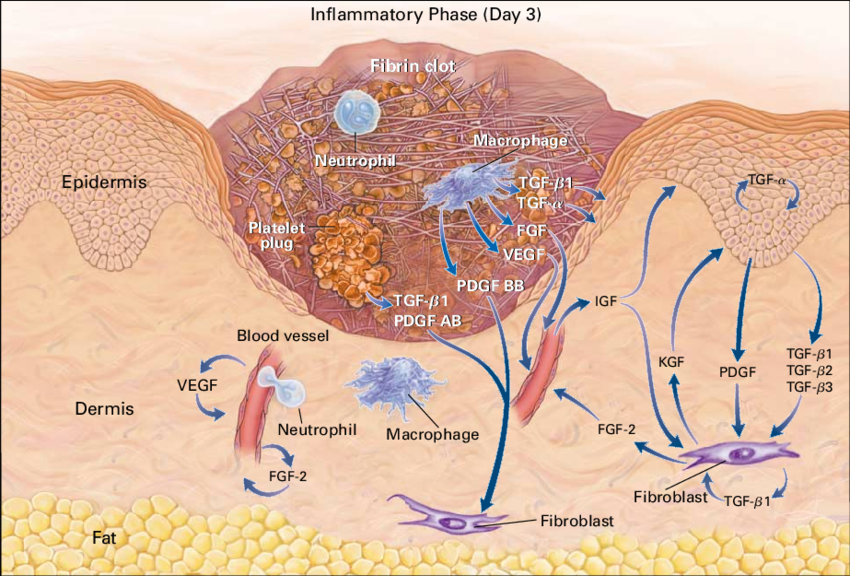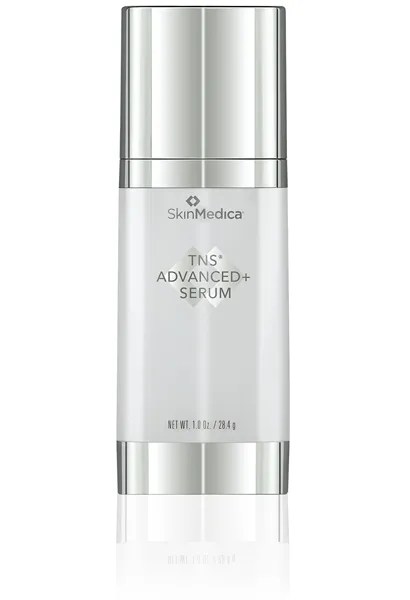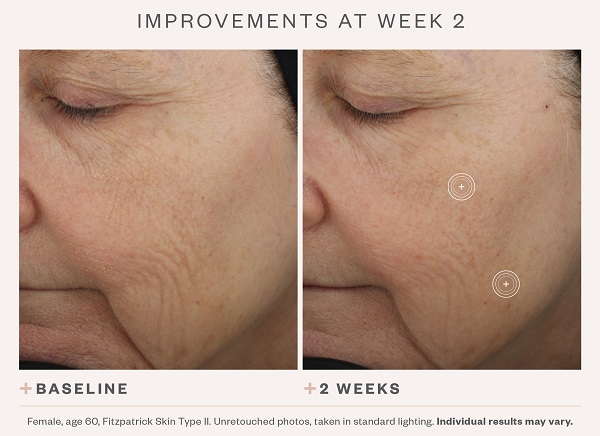I’m so impressed by SkinMedica’s growth factors and I know when I’m trying to explain them to regular folk, I blind everyone with science (science nerd here) so I’m writing this article to try to explain with illustrations why this is so amazing.
SkinMedica was originally making dressings for burns using cultured human cells. In science, there are all kinds of different cell lines, and they start out by a donation of tissue. For instance, there was a lady named Henrietta Lacks who had a malignancy and she donated some cells that were used to found the HeLa cell line that is used in researching cancer. Her story was made into a book and movie.
SkinMedica’s cell line came from a foreskin that was donated by the parents when a baby was being circumcized. The baby was going to be circumcized anyway so instead of throwing the tissue away, it was donated to science.

This is the type of flask that cells are cultured in. The flask is laid on its side in the incubator, to allow the greatest surface area for the cells to multiply on.
In order to culture cells, you put nutrient solution in a flat-sided bottle, add a few cells, lay the bottle on its side in an incubator and wait for the cells to grow. The cells grow in a layer on top of the nutrient fluid. Once the cells have multiplied enough to fill the surface of the fluid, the cells are harvested. A few cells would be transferred from the old bottle to a new bottle containing fresh nutrient solution.

This would be occurring at the bedside. The cultured cells are carefully lifted from the flask and applied to the patient’s burns
They used to discard the used nutrient solution until one day someone had the brilliant idea of checking the solution to see what it contained. It turned out that it contained a lot of growth factors.
What are growth factors? And why should we be excited about them?
Growth factors are peptides that we are continuously making in our bodies. They have a control and regulation function at the cell level. For instance, when we get a cut on our skin, the cells in the area have to coordinate together to stop the bleeding, make scar tissue, make new skin cells, make new blood vessels, fight off infection and so on. Growth factors are the way that cells talk to each other, to say “I’m doing this, you do that” and to attract circulating cells like white blood cells and platelets to the injury.
Humans make hundreds of different growth factors and not all of them have been named or studied.
The typical way we study growth factors is to isolate a specific peptide and experiment with it to see what effect it has on various types of cells. Thus we have a growth factor named Fibroblast Growth Factor (FGF) that was so named because it had a stimulatory effect on fibroblasts (skin cells involved in scar tissue formation). However, we now know that FGF has effects on many other types of cells.
Even though science recognizes that a single growth factor can have many types of effects, and can demonstrate, for instance, that FGF can stimulate the release of a bunch of other growth factors, it is difficult to design experiments to show precisely what combination of growth factors gives better results. And when you consider that not all growth factors have been studied, it is quite likely that we are overlooking the synergistic effects of combining multiple growth factors.

I included this diagram to give you an idea of all the many tasks involved in healing the skin, and the variety of growth factors involved. Anything with GF in the name is a growth factor
This is why I love SkinMedica’s growth factor products over other brands that might contain a single growth factor or maybe a combination of 2 or 3.
SkinMedica’s TNS growth factors contains a natural physiological mixture of ALL of the growth factors that the foreskin cells produce. And it is highly concentrated. Thus we get the benefit of all of the growth factors working together, even the ones that haven’t been named yet.
SkinMedica’s research shows that if you use their product for 4 months, you increase collagen in the skin by 40%. It takes a bit of time to grow that much collagen; I generally see a noticeable difference within 3 weeks when I start someone on TNS Recovery Complex or TNS Essential Serum.
Taking growth factors to a new level
When we’re growing cells in an incubator, it is standard to provide normal body temperature and oxygen levels. In these conditions, the foreskin cells produce more foreskin cells. Someone asked the question “if we grow these cells in different conditions, can we get a different outcome?”
The conditions they experimented with are those of a fetus in the uterus, which is a little warmer and with much lower oxygen levels.
Did you know that as a fetus, you had a different type of hemoglobin (the molecule in red blood cells that carries oxygen to all your tissues) than you have now? Our adult hemoglobin wouldn’t work very well in fetal conditions so the wisdom of the body is to use a different hemoglobin that works in a low oxygen environment. Soon after birth, our bodies switch over to making the normal form of hemoglobin.
When they tried culturing the cells in lower oxygen and warmer temperatures, some of the cells that grew were stem cells! The foreskin cells reverted to an earlier stage of development. And they still had all of the growth factors in the nutrient solution.
What are stem cells?
We all start out as a fertilized egg, right? So how do we go from 1 cell to a body with trillions of cells, each specialized to be a specific organ or tissue?
The fertilized egg starts dividing so we get 2 cells, then 4, then 8 and so on. When there are a few hundred cells, the cells differentiate into 3 types, through a process of turning off some genes and turning on others in each cell line.
In science, this differentiation process has been likened to the branches of a tree. The fertilized egg is the trunk, the endoderm, mesoderm and ectoderm are the branches. Endoderm cells differentiate into internal organs like lung, thyroid and the digestive cells of the gut. Mesoderm cells differentiate into muscular structures like heart and skeletal muscle and components of internal organs. Ectoderm cells differentiate into skin cells and neurons in the brain.
A stem cell is one that can differentiate into different daughter cells. And science and medicine is finding stem cells very useful for regeneration and rejuvenation.

Mesenchymal stem cells (MSCs) can be grown and differentiated into cells for a variety of different organs
When SkinMedica tested their new mixture of growth factors and stem cells, they found that in addition to the superficial effects like erasing fine lines, softening deep lines, improving texture and tone of the skin, it also lifted sagging skin, suggesting the stem cells were turning on some deeper structural changes.
 Thus TNS Advanced+ Serum was born.
Thus TNS Advanced+ Serum was born.
Clinical studies found that patients looked 6 years younger after 12 weeks, with significant improvements in the appearance of sagging skin after 8 weeks. And even better than that, study participants felt they looked better and better, the longer they used the product.
That is why I think TNS Advanced+ Serum is an essential tool for keeping my face looking younger.

The wrinkles on the eyelid and the cheek are reduced. The cheek improvement is an indicator of lifting of sagging skin. Amazing to see this much change in only 2 weeks.